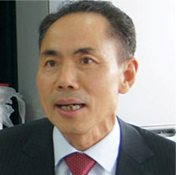May.14, 2010
Bud Fox’s TV has rabbit ears, members of the board of Teldar Paper smoke at the annual stockholders’ meeting, and Gordon Gekko hoists his hefty Motorola DynaTAC 8000 to his ear as though he were listening for the beating heart of a small animal.
Remember this? Gekko stands in the California surf barking at Bud through that first version of the mobile phone (which cost about four grand, by the way). “Money never sleeps, pal,” Gekko instructs — one of those sticky aphorisms that naturally complement the non-stop swagger of Wall Street.
Time passes. Gekko is out of jail, having served eight years for the trifecta of fraud, money laundering and racketeering, and director Oliver Stone is taking a second pass at the amorality of Wall Street with his new movie entitled, catchily, Wall Street: Money Never Sleeps.
It didn’t work the first time. Nailing the amorality that is. Alan Flusser, the custom clothier who dressed Michael Douglas for Wall Street One, says moviegoers with money not only loved the sartorial splendour, they wanted to be Gordon Gekko. “People from literally all over the world would fly in to look like Michael Douglas,” Flusser says from the Manhattan offices of Alan Flusser Custom. “Michael tells me he runs into people (who say), ‘Because of your role in Wall Street I became an investment banker.’ ”
Greenmailer. Oily arbitrageur. Destroyer of jobs. Gekko was nasty and noxious, but he sure looked sharp in his pin collars and French cuffs. Flusser says 20th Century Fox spent upwards of $50,000 on the Gekko wardrobe for the first film. “It was a wardrobe unlike any that had been made,” Flusser says. How would he describe it? “I’ve written four books and I haven’t come up with any better term than f--- you clothes.”
The power of the bespoke suit. Being able to retain the services of a custom tailor, Flusser adds, “is the ultimate point of arrival.”
There have been many departures since Wall Street was released to cinema late in 1987.
Let’s see. Ivan Boesky was sentenced in December 1987 to three years for insider trading, and served two. Dennis Levine, who turned on Boesky, served two. Drexel Burnham Lambert sought bankruptcy protection in the early months of 1990, the ultimate ignominy for the brokerage firm that reigned in the realm of the hostile takeover. Michael Milken, Drexel’s junk bond king, was shipped to the big house, having crumpled under the prosecutorial weight of some pit bull district attorney named Rudy Giuliani. It was Giuliani who had the bright idea of bringing racketeering charges to the real Wall Street, which was papered in so many tales of avarice that Stone appeared part auteur, part clairvoyant.
Stitching fact to Hollywood fiction, Gekko echoes Boesky’s own “greed is healthy” speech — given to the students at the University of California, Berkeley, in 1986 — by proclaiming that “Greed, for lack of a better word, is good. Greed is right. Greed works.”
Wall Street One was meant to disassemble that notion. At the end of the hostile-takeover, stock-parking, inside-tipping drama, Bud Fox — Charlie Sheen — is arrested in his brokerage office and does a teary perp walk past fat-boy computer terminals that trademark the movie as a product of the ’80s.
Fox was meant to be the poster boy for contrition, undergoing the grace of conversion from coke-snorting, rule-breaking playboy. “We thought it was over, the history of that greed,” Stone said in a recent interview with The Hollywood Reporter.
As if. The New York Times’s Vincent Canby pointed out in his 1987 review that the movie “crashes in a heap of platitudes.” What entices, what seduces, Canby wrote, was the “Sidney Sheldon-like peek into the boardrooms and bedrooms of the rich and powerful.”
Wall Street, generously, served up more than enough material for a sequel.
Let’s see. There was the collapse of the hedge fund Long-Term Capital Management. And the energy giant Enron. There was the Martha Stewart-Sam Waksal insider-trading drama. Tyco. Adelphia. WorldCom. The infamous vodka-peeing David ice statue. It all seems so very long ago.
And inconsequential.
It’s rather poignant to recall that Charlie Sheen hung out at Bear Stearns to prep himself for his role in Wall Street One. For it is the behaviour of the big investment banks that caught Stone’s eye this time round. Bear Stearns, as we know, cratered in the financial markets maelstrom triggered by the subprime crisis and was bought out by JPMorgan Chase. Lehman Brothers, another storied investment bank, grabbed a piece of history by filing the largest corporate bankruptcy in U.S. history.
I don’t know if there’s a lot of talk about synthetic collateralized debt obligations and credit default swaps in the new movie. If so, Stone needn’t have bothered. As the head of enforcement for the U.S. Securities and Exchange Commission said last month, “The product was new and complex but the deception and conflicts are old and simple.” He was speaking in the context of fraud charges laid April 16 against Goldman Sachs.
What does it say about Wall Street when it outreaches Hollywood’s most renowned conspiracy theorist?
Stone, somewhat amusingly, had hoped to film within Goldman’s rarefied confines. “They would not let us in,” he told The Hollywood Reporter. “They sealed their floors to us.”
Instead, he filmed on the still-new, 72,000-square-foot trading floor of RBC Capital Markets, one of the largest trading floors in New York. “That was a wonderful break for us, because it was a classy-looking bank and gave us the right feeling that we needed for Goldman — I don’t want to say Goldman, I want to say ‘from The Bank’ — in the film. Don’t pinpoint me.”
The trading terminals on the RBC floor — where traders turn tens of billions of dollars worth of commodities and equities daily — are wafer thin. The cut of the suits? Slimmer. Pleated pants and suspenders? Not so much.
But you know if Gordon Gekko, circa 1987, were to walk through a trading floor today, he’d still look pretty sharp. I bet nobody would bat an eye.












